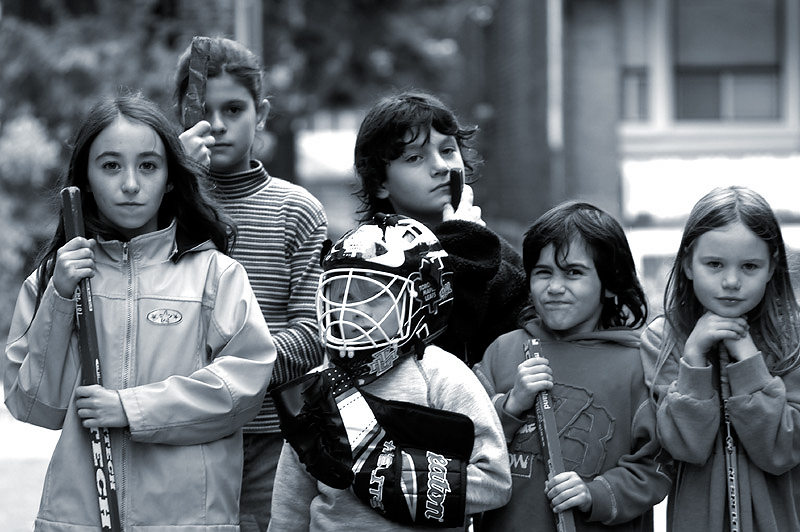
Photo courtesy of Spacing Magazine
How to use economics to get kids to eat broccoli and train for the NHL
The following post is from Hockey Night in Headingley, a blog created by University of Manitoba economics professors and hockey parents, Ryan and Janice Compton.
As the Comptons write in their inaugural Oct. 16, 2013 post introducing themselves:
“Janice spends most semesters teaching large classes in first year microeconomics where hockey examples tend to be class favourites, while Ryan frequently offers a course in sports economics with a significant focus on hockey. With the recent return of the NHL to Winnipeg, coupled with our boys playing hockey most months of the year, hockey and economics is a frequent topic in our household, and we hope this blog will be a place to give our thoughts as well as learn a thing or two ourselves.”
Here is their latest entry, dated March 5, 2014.
The Economics of Paying for Goals
Economics is about incentives. Raising children is often about incentives as well. Sure, we would like our kids to eat their vegetables out of a love for vegetables, but let’s be honest, kids are quite the little self-interested utility maximizers who heavily discount the future. The threat of no dessert fits much better with economic theory than does the phrase “eat your broccoli so that you will be less likely to suffer from Type II diabetes when you are 65.” We bribe. No, strike that. As economists, we don’t bribe – we ‘nudge’.
But what about hockey? Does it make economic sense to ‘nudge’ children to provide extra effort on the ice? We often hear of parents paying for goals, or points, or championships – sometimes in money and sometimes with promises of slurpees for hat tricks. Is this optimal behaviour?
There are really two questions involved here. First, what is the behaviour we are trying to incentivize? And second, what is the best way to encourage children towards this behaviour.
I don’t think parents who pay for goals are really focussed on the goals. At least I hope they aren’t. I believe the true aim is to encourage their children to try their hardest when they are on the ice. Goals are just the most obvious outcome of this effort, especially for the youngest players. Sure, we would like kids to always try their hardest when they are playing hockey (as in anything they do) simply because this drive to succeed will take them far. But let’s be honest, kids are often distracted, lazy, or – the phrase heard most often around the rinks – inconsistent. The promise of a new Skylander if Johnny scores a goal is sometimes more salient than the inner satisfaction of playing a good game. The hope of parents of course is that the kid’s initial success (perhaps due in part to bribes) feels so good that it helps develop inner motivation for more success.
Assuming then that parents want to encourage children to try hard on the ice, is paying for goals the best way to do this?
First off, let’s not forget that this is a team sport. Paying for goals is inherently different than paying a swimmer for besting their lap time. The goal of a hockey player should not be to score a goal; it should be to help their team score more goals than the other team. To that end, one could consider a payment system based on their plus/minus or assists. However, lessons from labour economics suggest that even these broader measures could undermine group productivity. Performance-based pay is less effective when the tasks of the job include multi-tasking, teamwork, and other characteristics for which individual contribution is difficult to determine. Strong players may start to resent their less-able teammates for low stats, and those children not putting in a strong effort may be rewarded for the hard work of their teammates.
 So what to do?
So what to do?
One suggestion comes from the economic literature on incentives in children’s education, most notably the work by Roland Fryer, of Harvard. Using very large, school-randomized experiments, Fryer measures the impact of a variety of financial incentive programs on student achievement. The key result is that rewards for inputs (class attendance, reading books, homework completion, good behaviour) produced results in terms of increased performance on tests. On the other hand, directly paying for increased scores on tests did not have the desired results. The rationale behind this – paying for inputs rather than outputs – is that children do not necessarily understand how to perform better on tests.
Just as young hockey players may not always understand how to play good hockey.
The lesson for hockey parents? Don’t reward children for outputs (goals, points, wins, plus/minus) but rather for inputs. Buy them a timbit after an especially good practise. Give them a loonie when they work on their cross-overs. Allow more time on the Ipad when they listen to their coach during practise. Set up a chart for the number of shots they take in the driveway.
Incentivize the inputs and let the kids do the rest.
Research at the University of Manitoba is partially supported by funding from the Government of Canada Research Support Fund.






